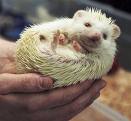Pregnant women who are part of an Asian-white couple face an increased risk of gestational diabetes as compared with couples in which both partners are white, according to a new study from Lucile Packard Children's Hospital and the Stanford University School of Medicine.
The researchers also found that Asian women whose partners are white are more likely than white women with Asian or white partners to have a caesarean delivery, as part of a broad analysis of perinatal outcomes among Asian, white and Asian-white couples.
The study will be published in the October issue of American Journal of Obstetrics and Gynecology. The findings, the authors say, could benefit clinicians working with an increasingly diverse patient population.
"There's great heterogeneity in our country; there are people of many different races and backgrounds," said co-author Yasser El-Sayed, MD, a Packard Children's Hospital obstetrician and associate professor of obstetrics and gynecology at the medical school. "Gaining better insight into the risks facing specific populations provides for better counseling and better prenatal care."
It's difficult to estimate the prevalence of Asian-white couples, but 14.3 percent of Americans reporting Asian race in the U.S. Census Bureau's 2000 survey also reported being of mixed Asian-white ancestry. Although past studies have looked at ethnic differences in perinatal outcomes, the majority of research has focused on white- African-American couples. Few studies have focused specifically on Asian-white couples, said El-Sayed, who is also associate chief of maternal-fetal medicine.
To learn more about outcomes and risks in this population, the researchers looked at data from white, Asian and Asian-white couples who delivered at the Johnson Center for Pregnancy and Newborn Services at Packard Children's from 2000 through 2005. (During that time period, 5,575 white, 3,226 Asian and 868 Asian-white couples delivered babies at the hospital.) The team recorded the type of delivery - caesarean vs. vaginal - and examined perinatal outcomes including gestational diabetes, hypertensive disorders of pregnancy, preterm delivery and birth weight.
El-Sayed and his colleagues found, as noted in their paper, that Asian- white couples "represent a population with distinct perinatal risks that differ depending upon which parent is of Asian race."
More specifically, the researchers found that white mother/Asian father couples had the lowest rate (23 percent) of caesarean delivery, while Asian mother/white father couples had the highest rate (33.2 percent). Because birth weights between these two groups were similar, the researchers say the findings suggest that the average Asian woman's pelvis may be smaller than the average white woman's and less able to accommodate babies of a certain size. (Asian couples had babies with the lowest median birth weight, so caesarean delivery was less common among those women.)
It's important for clinicians to know which women may have an increased risk of caesarean delivery, so they can conduct proper counseling prior to childbirth, El-Sayed said.
El-Sayed and his colleagues also found that the incidence of gestational diabetes was lowest among white couples at 1.61 percent and highest among Asian couples at 5.73 percent - and just under 4 percent for Asian-white couples. These findings weren't altogether surprising: past studies have shown an increased risk of diabetes among Asian couples, which researchers attribute to an underlying genetic predisposition. But the interesting finding, El-Sayed said, was that the risk for interracial couples was about the same regardless of which parent was Asian.
Based on their findings, El-Sayed said clinicians should consider both maternal and paternal race when determining a patient's risk for perinatal complications. "One has to factor in as many relevant variables as possible when you counsel a patient about pregnancy," he said. "We've shown in this paper that if you have an interracial couple, depending on which parent is of which race, there may be different relative risks of certain outcomes that could inform and enhance clinical management."

 Warning: young children should not keep hedgehogs as pets — or hamsters, baby chicks, lizards and turtles, for that matter — because of risks for disease.
Warning: young children should not keep hedgehogs as pets — or hamsters, baby chicks, lizards and turtles, for that matter — because of risks for disease. 
 Toxic fire retardant chemicals linked to cancer, birth defects, and neurological and other health problems are prevalent in common baby products, according to a study released by national environmental group Friends of the Earth.
Toxic fire retardant chemicals linked to cancer, birth defects, and neurological and other health problems are prevalent in common baby products, according to a study released by national environmental group Friends of the Earth.